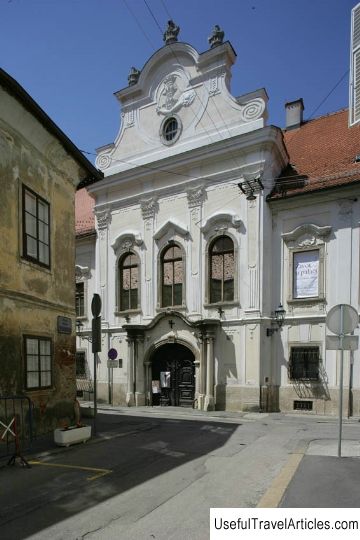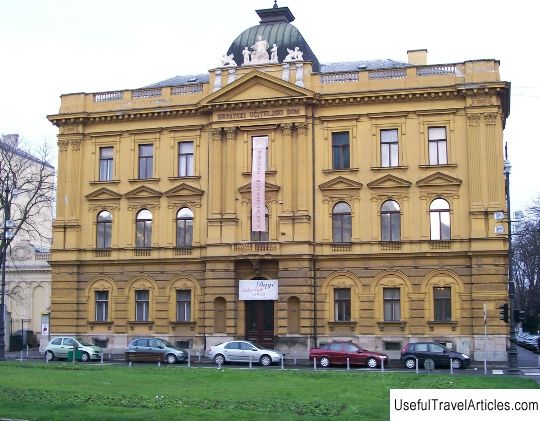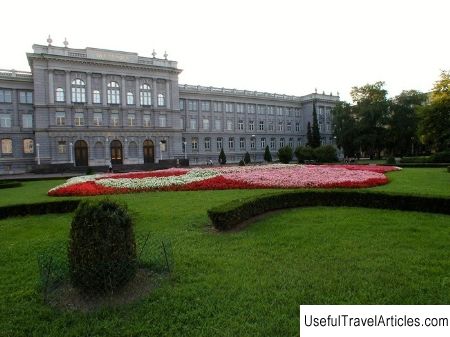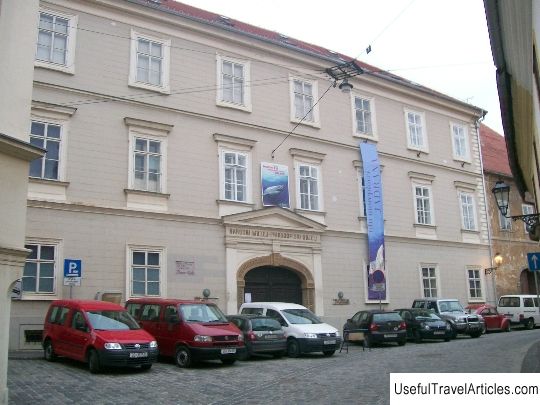Museum of Naive Art and Gallery of Modern Art (Hrvatski muzej naivne umjetnosti i Muzej suvremene umjetnosti) description and photos - Croatia: Zagreb
Rating: 8,7/10 (500 votes) 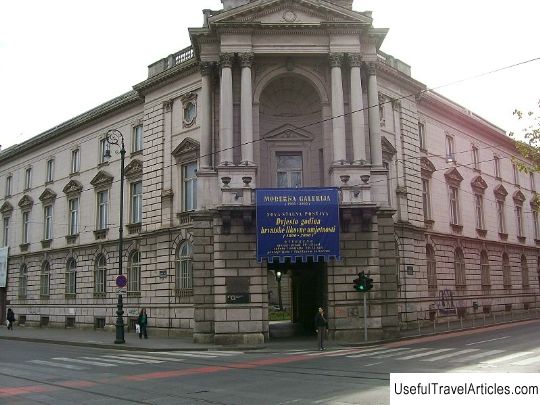
Museum of Naive Art and Gallery of Modern Art (Hrvatski muzej naivne umjetnosti i Muzej suvremene umjetnosti) description and photos - Croatia: Zagreb. Detailed information about the attraction. Description, photographs and a map showing the nearest significant objects. The name in English is Hrvatski muzej naivne umjetnosti i Muzej suvremene umjetnosti. Photo and descriptionMuseum of Naive Art - Museum of Fine Arts in Zagreb, dedicated to the work of primitivist artists of the 20th century. The museum fund consists of more than 1,850 works of art, among which paintings, drawings, sculptures and prints, were made mainly by Croats, but there are also works by other famous international artists of this genre. In 1952, the Peasant Art Gallery was founded in Zagreb. In 1956, it was known as the Gallery of Primitive Art and was part of the Municipal Gallery (now the Gallery of Contemporary Art). Since 1994, in accordance with the decision of the Croatian Parliament, the museum has been called the Croatian Museum of Naive Art. From the very beginning, the museum has been operating according to strict museological principles and is considered the world's first Museum of Naive Art. Since 2002, the museum has focused on reaching schools and students and intensifying education each year ahead of International Museum Day. Naive, or primitive, primitive art is an independent segment of 20th century art. Naive art appeared in Croatia at the beginning of the 30s. Naive art was originally associated with the work of peasants and workers, of which the most successful over time became professional artists. Naive art includes the work of artists who are somehow self-taught, have not undergone special training, but who have reached a high level of art. A recognizable individual style and poetic nature distinguishes primitivist artists from “amateurs”. The gaze of a primitivist artist usually reveals unusual proportions and certain illogical forms and spaces. In this way, artists express their free creative imagination by analogy with other art movements of the 20th century, such as symbolism, expressionism, cubism and surrealism. In Croatia, naive art is also seen as a democratic movement that proves that regardless of formal learning, anyone can create a real work of art. General themes of works include such as “joy of life”, “lost childhood”, “interesting in the world”, etc. The collection presented by the museum focuses on Croatian artists of the famous Khlebinsk school, as well as some independent artists. The collection includes works dating back to 1930. The famous Ivan Generalic was one of the first naive artists in Croatia to develop a distinctive creative style and achieve a high professional level in his art. The works of the 1930s are dominated by social issues, while later works show idealistic landscapes that give the imagination more scope than images of just open space. Works of the second generation of the Khlebinsky School of Artists (50-60) include burlesque and grotesque figures, as well as works inspired by biblical themes with a strong use of colors. The museum also organizes special thematic exhibitions focusing on individual artists or to highlight certain aspects of naive art. The Gallery of Modern Art exhibits the most complete collection of paintings, sculptures and drawings of the 19th and 20th centuries by Croatian artists. The collection includes about 10,000 works of art, which have been housed since 1934 in the historic Vranycany Palace in the center of Zagreb. The Gallery of Contemporary Art, and originally national for Croatian art, dates back to early 1900, when it was founded by the Art Society from paintings and sculptures acquired by its members, as well as donations from Bishop Strossmayer. In 1905, 3 works were purchased for the fund of the future Gallery of Contemporary Art. The collection grew gradually and until 1914 was presented only to interested parties. As the collection expanded, in 1934 the gallery moved to its current building. Vranychany Palace was built in 1882. The magnificent receptions of the past have been replaced by the contemplative atmosphere of the Gallery of Modern Art. The palace was completely renovated from 1993 to 2005, when the current exhibition was presented to the public. The two floors of the palace have become a modernly equipped gallery, presenting visitors with a permanent collection of Croatian contemporary paintings and sculptures. In completely renovated historic rooms, the gallery presents “200 Years of Croatian Fine Art (1800-2000)”, a representative sample of 650-700 of the best painters, sculptors and medal makers. The Gallery of Modern Art has become the most famous and complete museum of Croatian contemporary art. Since 1960, retrospective and monographic exhibitions of works by famous Croatian artists have been held here, as well as thematic exhibitions of Croatian and European contemporary art.            We also recommend reading Mansion of architect P. M. Zybin description and photo - Russia - Volga region: Saratov Topic: Museum of Naive Art and Gallery of Modern Art (Hrvatski muzej naivne umjetnosti i Muzej suvremene umjetnosti) description and photos - Croatia: Zagreb. |

